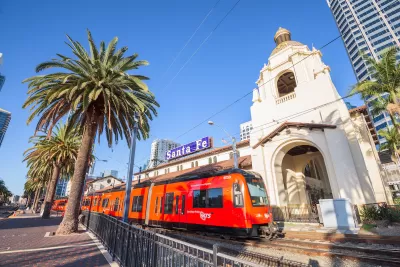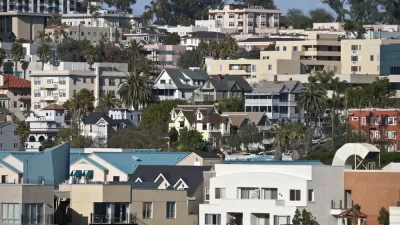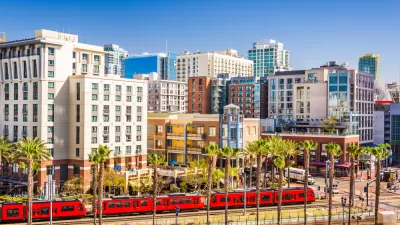The new plan, set to take effect in 2025, accounts for changes in mobility patterns brought on by remote work.

The San Diego Association of Governments (SANDAG) is developing a new long-term transportation plan that will account for the rise in remote work and changes in local commuting and travel patterns, reports Andrew Keatts in Axios.
“Antoinette Meier, SANDAG's senior director of regional planning, said SANDAG's planning decisions always assumed remote work decreased driving, so accounted for greenhouse gas emissions reductions mandated by state law.” However, people are making other vehicle trips that would have previously been wrapped into commutes, leading to a smaller reduction in vehicle miles driven and emissions than previously estimated.
Meanwhile, “San Diego Councilmember Vivian Moreno said the fact that higher-income people living in the northern part of the county are more likely to be allowed to work remotely needs to be factored into the agency's transportation decisions.” As the article notes, “56% of households with annual incomes above $150,000 remote work, more than twice the rate of households with incomes below $49,000.” Moreno called on SANDAG to plan for expanded transit and transportation projects in the southern part of the county, where residents are more likely to continue having to commute to physical workplaces.
FULL STORY: Remote work helps draw blueprint for region's transportation system

Study: Maui’s Plan to Convert Vacation Rentals to Long-Term Housing Could Cause Nearly $1 Billion Economic Loss
The plan would reduce visitor accommodation by 25,% resulting in 1,900 jobs lost.

North Texas Transit Leaders Tout Benefits of TOD for Growing Region
At a summit focused on transit-oriented development, policymakers discussed how North Texas’ expanded light rail system can serve as a tool for economic growth.

Using Old Oil and Gas Wells for Green Energy Storage
Penn State researchers have found that repurposing abandoned oil and gas wells for geothermal-assisted compressed-air energy storage can boost efficiency, reduce environmental risks, and support clean energy and job transitions.

Private Donations Propel Early Restoration of Palisades Playground
Los Angeles has secured over $1.3 million in private funding to restore the Pacific Palisades playground months ahead of schedule, creating a modern, accessible space that supports community healing after recent wildfires.

From Blight to Benefit: Early Results From California’s Equitable Cleanup Program
The Equitable Community Revitalization Grant (ECRG) program is reshaping brownfield redevelopment by prioritizing projects in low-income and environmental justice communities, emphasizing equity, transparency, and community benefits.

Planting Relief: Tackling Las Vegas Heat One Tree at a Time
Nevada Plants, a Las Vegas-based nonprofit, is combating the city’s extreme urban heat by giving away trees to residents in underserved neighborhoods, promoting shade, sustainability, and community health.
Urban Design for Planners 1: Software Tools
This six-course series explores essential urban design concepts using open source software and equips planners with the tools they need to participate fully in the urban design process.
Planning for Universal Design
Learn the tools for implementing Universal Design in planning regulations.
Ascent Environmental
Borough of Carlisle
Institute for Housing and Urban Development Studies (IHS)
City of Grandview
Harvard GSD Executive Education
Toledo-Lucas County Plan Commissions
Salt Lake City
NYU Wagner Graduate School of Public Service





























